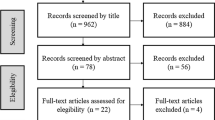Abstract:
The lack of standardized terminology in pelvic floor disorders (pelvic organ prolapse, urinary incontinence, and fecal incontinence) is a major obstacle to performing and interpreting research. The National Institutes of Health convened the Terminology Workshop for Researchers in Female Pelvic Floor Disorders to: (1) agree on standard terms for defining conditions and outcomes; (2) make recommendations for minimum data collection for research; and (3) identify high priority issues for future research. Pelvic organ prolapse was defined by physical examination staging using the International Continence Society system. Stress urinary incontinence was defined by symptoms and testing; ‘cure’ was defined as no stress incontinence symptoms, negative testing, and no new problems due to intervention. Overactive bladder was defined as urinary frequency and urgency, with and without urge incontinence. Detrusor instability was defined by cystometry. For all urinary symptoms, defining ‘improvement’ after intervention was identified as a high priority. For fecal incontinence, more research is needed before recommendations can be made. A standard terminology for research on pelvic floor disorders is presented and areas of high priority for future research are identified.
Similar content being viewed by others
References
Thomas TM, Plymat KR, Blannin J, Meade TW. Prevalence of urinary incontinence. Br Med J 1980;281:1243–1245
Population Profile of the United States, Economic and Statistics Administration: Bureau of the Census, US Department of Commerce; 1997
Norton PA. Pelvic floor disorders: the role of fascia and ligaments. Clin Obstet Gynecol 1993;36:926–938
Fantl JA, Newman DK, Colling J et al. Urinary incontinence in adults: acute and chronic management. Clinical Practice Guideline, No. 2, 1996 Update. Rockville, MD: US Department of Health and Human Services. Public Health Service, Agency for Health Care Policy and Research. AHCPR Publication No. 96-0682. March 1996
Black N, Downs S. The effectiveness of surgery for stress incontinence in women: a systematic review. Br J Urol 1996;78:497–510
Sze EH, Karram MM. Transvaginal repair of vault prolapse: a review. Obstet Gynecol 1997;89:466–475
Bump RC, Norton PA. Epidemiology and natural history of pelvic floor dysfunction. Obstet Gynecol Clin North Am 1998;25:723–746
National Institutes of Health Consensus Development Conference. Urinary incontinence in adults. J Am Geriatr Soc 1990;38:265–276
Begg C, Cho M, Eastwood S et al. Improving the quality of reporting of randomized controlled trials: The CONSORT statement. JAMA 1996;276:637–639
Lose G, Fantl A, Arne V et al. Outcome measures for research in adult women with symptoms of lower urinary dysfunction. Neurourol Urodyn 1998;17:255–262
Mattiasson A, Djurhuus J, Fonda D, Lose G, Nordling J, Stoher M. Standardization of outcome studies in patients with lower urinary tract dysfunction. Neurourol Urodyn 1998;17:249–253
Bump RC, Mattiasson A, Bo K et al. The standardization of terminology of female pelvic organ prolapse and pelvic floor dysfunction. Am J Obstet Gynecol 1996;175:10–17
Grimby A, Milson L, Molander U, Wiklund I, Ekeland P. The influence of urinary incontinence on quality of life of elderly women. Age Ageing 1993;22:82–89
Wagner TH, Patrick DL, Buesching DP. Quality of life of persons with urinary incontinence. Development of a new measure. Urology 1996;47:67–73
Naughton MJ, Wyman JF. Quality of life of geriatric patients with lower urinary tract dysfunctions. Am J Med Sci 1997;314:219-224
Abrams P, Blaivas JG, Stanton SL, Andersen JT. The standardization of terminology of lower urinary tract function recommended by the International Continence Society. Int Urogynecol J 1990;1:45–58
Rockwood TH, Church JM, Fleshman JW et al. Patient and surgeon ranking of the severity of symptoms associated with fecal incontinence: the fecal incontinence severity index. Dis Colon Rectum 1999;42:1525–1532
Vaizey CJ, Carapeti E, Cahill JA, Kamm MA. Prospective comparison of faecal incontinence grading systems. Gut 1999;44:77–80
Mellgren A. Diagnosis and treatment of constipation. Eur J Surg 1995;161:623–634
Kumar D, Bartolo DCC, Devroede G et al. Symposium on constipation. Int J Colorect Dis 1992;7:47–67
Thompson WG, Longstreth GF, Drossman DA, Heaton KW, Irvine EJ, Moller-Lissner SA. Functional bowel disorders and functional abdominal pain. Gut 1999;45(Suppl II):II43–II47
Author information
Authors and Affiliations
Additional information
EDITORIAL COMMENT: This is a compilation of opinions regarding the need for standardization of terminology for pelvic floor dysfunction. Some of their definitions may or may not be appropriate, however, we are now in the process of defining what represents prolapse versus normal, and what represents a cure after intervention versus persistence. Hopefully this document will serve as a starting point to allow for further discussions and revisions of these definitions as we study this complex problem.
Rights and permissions
About this article
Cite this article
Weber, A., Abrams, P., Brubaker, L. et al. The Standardization of Terminology for Researchers in Female Pelvic Floor Disorders . Int Urogynecol J 12, 178–186 (2001). https://doi.org/10.1007/PL00004033
Issue Date:
DOI: https://doi.org/10.1007/PL00004033




